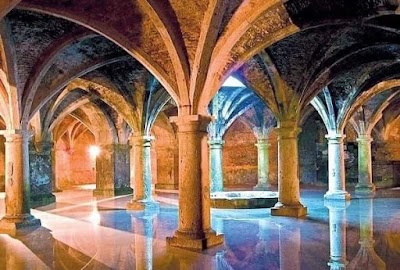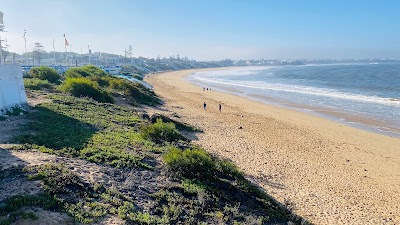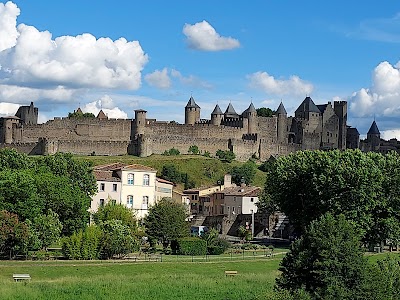St. Sebastian Fortress (Forteresse Saint-Sébastien)
Overview
Bastion de Saint-Sébastien: A Historical Marvel in El Jadida
Bastion de Saint-Sébastien, also known as St. Sebastian Fortress, is a breathtaking historical fortification nestled in the charming coastal city of El Jadida, Morocco. This remarkable structure is a prime example of Renaissance military architecture, steeped in rich history and captivating stories waiting to be discovered.
Constructed in the early 16th century by the Portuguese, the fortress was strategically built to safeguard El Jadida, then called Mazagan. The construction spanned from 1506 to 1514, during the reign of King Manuel I of Portugal, with the talented military engineer Diogo de Arruda at the helm of the design. Recognizing the region's vulnerability to pirate raids and threats from the Saadian dynasty, the Portuguese aimed to create a formidable defensive stronghold.
The fortress derives its name from Saint Sebastian, a Christian martyr, symbolizing a plea for protection and good fortune. Built from local sandstone and other readily available materials, Bastion de Saint-Sébastien features thick, sloping walls and star-shaped bastions, designed to deflect cannon fire and minimize damage during potential attacks. Its strategic location atop a rocky promontory provided a natural defense against naval incursions.
Within the fortress, visitors can explore four main bastions: Saint Sebastian, Saint Antoine, Saint André, and Saint Spirit. These bastions are interconnected by robust walls that encompass the entire complex, with a heavily fortified main gate designed to withstand sieges and assaults.
One of the fortress's most intriguing features is its advanced water management system. Ingenious engineers developed a network of underground cisterns and channels to collect and store rainwater, ensuring a reliable supply during extended sieges. The most famous among these is the Portuguese Cistern, an underground reservoir adorned with a stunning vaulted ceiling supported by massive pillars, offering a glimpse into the fortress's innovative design.
Throughout the 16th century, Bastion de Saint-Sébastien played a crucial role as a defensive outpost for the Portuguese along the Atlantic Coast. However, in 1769, the Portuguese were compelled to abandon Mazagan after a relentless siege by Sultan Mohammed ben Abdallah's forces. Following a negotiated withdrawal, the fortress was handed over to the Moroccans and integrated into the sultan's defense system.
After the Portuguese left, the fortress fell into disrepair and was largely forgotten until the late 19th and early 20th centuries. Restoration efforts commenced under the French Protectorate, stabilizing and repairing key structures to preserve their historical significance and beauty.
In 2004, Bastion de Saint-Sébastien was designated a UNESCO World Heritage Site, along with the entire Portuguese City of Mazagan. This prestigious recognition underscored the fortress's cultural and architectural importance, igniting further conservation efforts to protect this historical gem.
Today, Bastion de Saint-Sébastien stands as a stunning testament to the historical interactions between Europe and North Africa. Visitors can roam its bastions, wander the winding corridors, and admire the ingenuity of its water management systems. The captivating Portuguese Cistern remains one of the fortress's highlights, inviting guests to delve into its storied past.
Beyond its historical significance, Bastion de Saint-Sébastien serves as a vibrant cultural symbol in El Jadida. The fortress hosts various cultural events, exhibitions, and artistic performances, bridging the gap between the past and present and ensuring that this magnificent structure remains a living part of the city's heritage.









